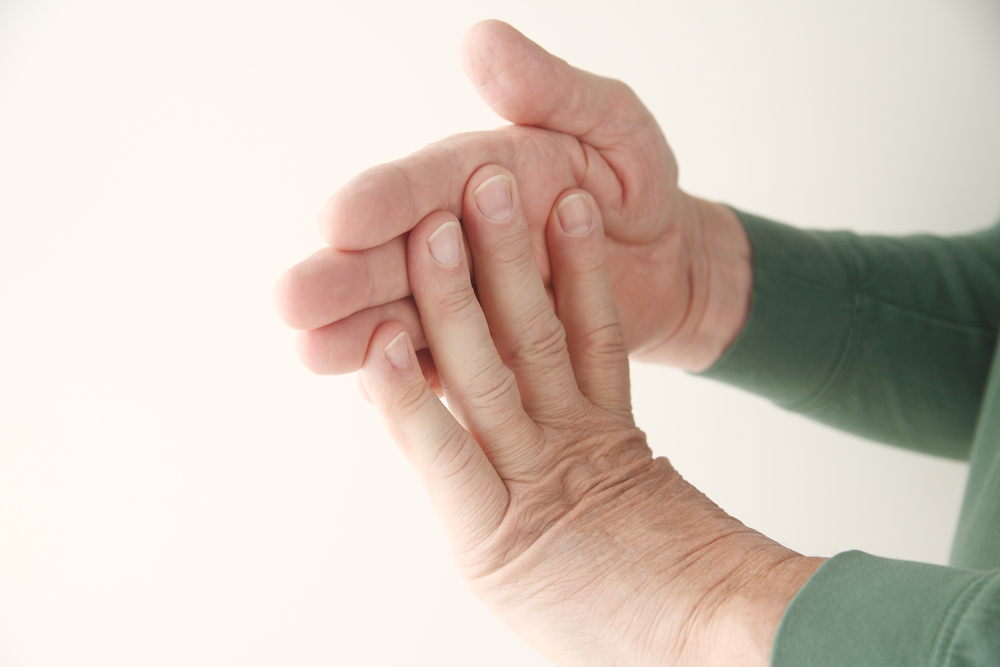The Knuckle-Cracking Debate Gets Twisty

There's a new twist in the debate about why knuckles crack.
Yes, it turns out that "why knuckles crack" is actually a debate — despite the existence of the phenomenon for approximately all of human history, researchers still don't know why it happens. And that's not for a lack of trying to understand: According to a new paper in the journal Scientific Reports, researchers have been looking into the question since the early 1900s.
The new paper posits that knuckle cracking happens because of the collapse of tiny air bubbles in the fluid that surrounds the joints. But a 2015 study on the subject essentially concluded the opposite, saying that the cracking sound occurs when these bubbles form, not when they pop.
Snap crackle pop
Over the years, scientists have theorized that the distinctive sound of a cracking knuckle could come from everything from vibrations in the tissue to the tightening of joint capsules to the collapse or formation of bubbles. This bubble formation is known as cavitation, and it occurs when the liquid synovial fluid that lubricates joints gets pulled apart, creating a sudden decrease in pressure and a resulting gas-filled space. In the case of joints, the gas is about 80 percent carbon dioxide, said Vineeth Chandran Suja, a doctoral candidate in chemical engineering at Stanford University who studies bubble dynamics.
Suja set out to investigate the knuckle-cracking conundrum after researchers from the University of Alberta in Canada reported that they'd put an expert knuckle cracker in a magnetic resonance imaging (MRI) machine and watched the process in real time. The team found that the cracking sound co-occurred with the creation of cavitation bubbles inside the joint.
Creation or collapse?
To Suja, that explanation seemed suspect. The magnitude of the cracking sound seemed too large to be coming from bubble formation, he and his co-author, Abdul Barakat of the UC Davis College of Engineering, wrote in their new paper. What's more, an MRI can only image so quickly, so it's possible that the imagery just wasn't fast enough to capture whether the sounds corresponded with bubble creation or collapse.
So instead, the researchers developed a mathematical model to describe exactly what happens in a joint as it pops. They discovered that the acoustics of a cracking knuckle seems to match what happens as the joint is released, the pressure on the synovial fluid rapidly increases and the bubbles partially collapse from large to small.
Sign up for the Live Science daily newsletter now
Get the world’s most fascinating discoveries delivered straight to your inbox.
"Our model shows that the acoustic signature from a partially collapsing bubble inside a cracked joint is similar to ones we observe experimentally," Suja told Live Science.
The research could help resolve the knuckle-cracking debate, Suja said. The University of Alberta study raised questions about how popping bubbles could be making sounds, because the researchers observed that there were still bubbles in the joint fluid after the cracking. The mathematical model explains how bubbles simply compressing, not disappearing completely, might make the noise, Suja said.
"Our model is the first mathematical model," he said, "and as such there are a number of future directions that can be pursued to develop improved models to confirm beyond doubt the source of the cracking sounds."
Editor's note: This article has been updating with additional information from Vineeth Suja.
Original article on Live Science.

Stephanie Pappas is a contributing writer for Live Science, covering topics ranging from geoscience to archaeology to the human brain and behavior. She was previously a senior writer for Live Science but is now a freelancer based in Denver, Colorado, and regularly contributes to Scientific American and The Monitor, the monthly magazine of the American Psychological Association. Stephanie received a bachelor's degree in psychology from the University of South Carolina and a graduate certificate in science communication from the University of California, Santa Cruz.










